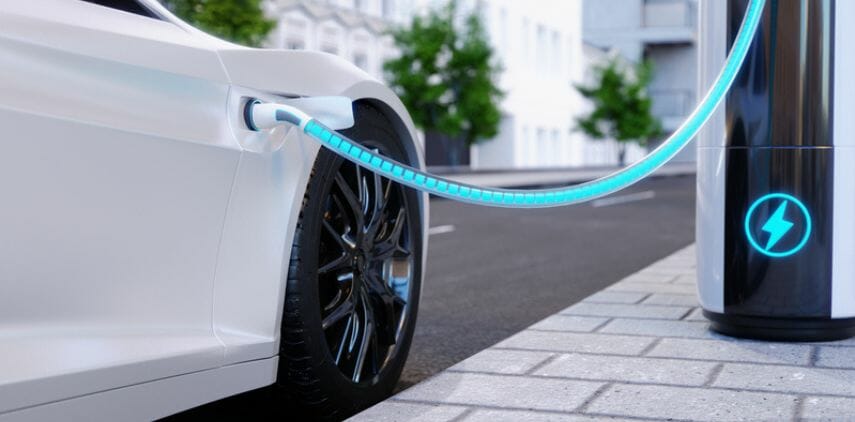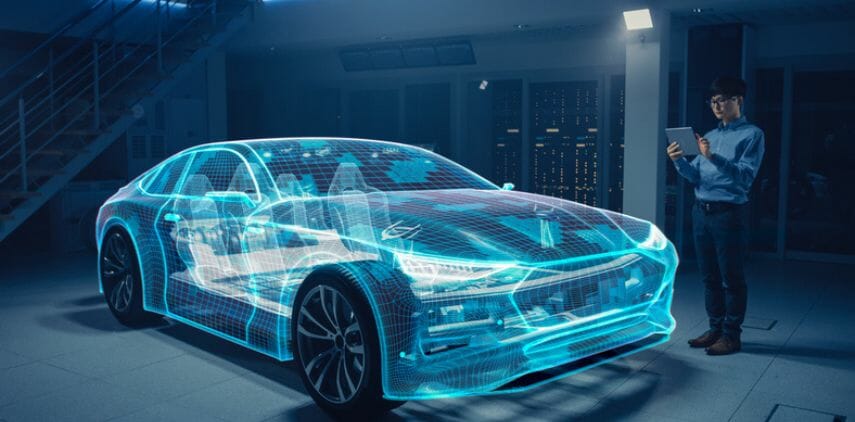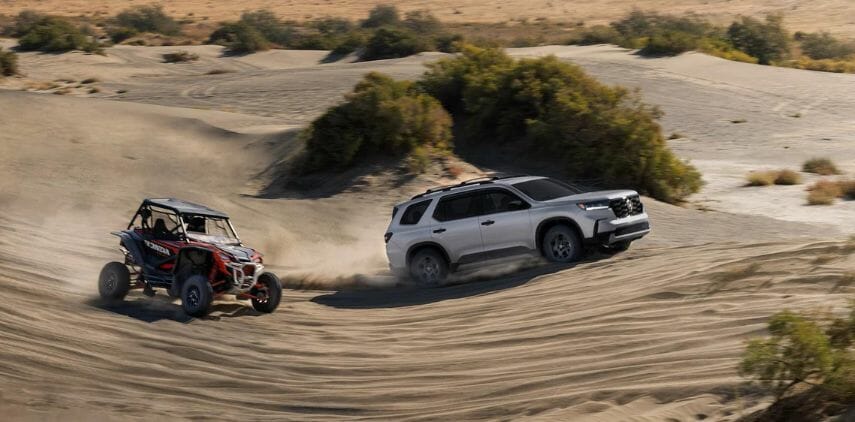Overview
The moment you hear about 12 cylinder engines, the image of a robust, powerful, and massive engine conjures up your mind. These engines found a place in premium luxury vehicles, fighter aircraft, and marine vessels, all thanks to their unmatchable power and hassle-free operation.
In terms of build, these engines are a lot more complicated than V6s or V8s, so they are naturally heavier in weight as well as in size. They are also highly fuel-thirsty, and not the best choice for offering fuel-efficient rides. Another downside is its high cost, so not everyone can afford to have 12-cylinder engine cars today.
This is the era of electrification, so clinging on to a massive V12 engine is neither practical nor economical. They are also notorious for excessive emissions and contributing to pollution. Keeping these issues in mind, manufacturers are doing away with these engines, focusing more on fuel-efficient electric models or lighter V6 engines.
But that doesn’t mean we can’t appreciate the mighty V12 engine. Whether they are in demand or not, their balanced delivery of smooth power will always be a quality to admire. Their distinctive sound is another reason for automotive enthusiasts to have a soft spot for the V12s.
In this article, we are going to dive deep into the world of 12 cylinder engines. Here you’ll find answers to all your queries regarding V12 engines, and we’ll also look at some of the greatest examples of this type.
Table of Contents
12 Cylinder Engine Definition
A 12-cylinder engine is one that has a total of 12 cylinders or combustion chambers. The cylinders are arranged in a V-shape on two sides of the middle shaft, which is why these engines are also called V12 engines.
When was the 12 cylinder engine developed?
The first 12-cylinder diesel engine was developed at the beginning of the twentieth century, in 1904. Eventually, it found its way under the hood of luxury vehicles, in airplanes, formula 1 cars, trucks, and rail engines.
Where was it used?
It didn’t take long for automotive experts to understand the value of V12 engines. This type of engine is not only powerful, but it also delivers power seamlessly, in a balanced manner. As a result, these engines are popular even today.
Within the first century of their coming into existence, V12 engines made a solid mark across various industries, including the following:
-
Airplanes
Renault was the first company to give aircrafts a V12 engine, somewhere around 1909. These engines became popular during World War I and continued to be used in airplanes. Fast forward to World War II, these engines became even more powerful with a drastic evolution. However, after the war ended, the introduction of turboprop and turbojet engines led to the decline of V12 engine-powered airplanes and fighter jets.
-
Automobiles
In the automobile industry, you’ll see V12 engines mostly in luxury and sports cars. Because of the intricate complexity of these engines, it only made sense to add them to expensive vehicles. Both European and American carmakers used 12-cylinder engines for their high power and smooth operation in upscale models. The lineups include Fiat 520 ‘Superfiat’, Maybach Zeppelin, Cadillac V12, Lincoln-Zephyr V12, Packard Twin Six, all produced during the period between the 1920s-1940s.
Cut to the present date, there are plenty of leading automotive companies that have powered their vehicles with a 12-cylinder engine, such as Audi, Jaguar, BMW, Aston Martin, Mercedes-Benz. However, all of these are European models. You cannot find anything similar from the US carmakers, because their preference lies with V8 engines.
-
Formula 1 Racing
V12 engines have been used in Formula 1 racing for a long time. First seen in Honda RA271, 12-cylinder engines found their place in a wide range of popular sports cars from big names like Ferrari, Cooper, Eagle, Alfa Romeo, Lamborghini, McLaren, Audi, and Peugeot.
Besides these, V12 engines are also used in trucks and railway locomotives. Modern-day large cruise ships often run on 12-cylinder diesel engines.
Why stuff 12 cylinders into a SUV?
While the majority of automakers are moving away from V12s to less complex and environmentally-friendly options, it’s impossible to deny the sheer power and smooth operation they offer.
If you’re wondering why stuffing a massive 12 cylinder engine into an SUV is a good idea, we have the answer.
A 12 cylinder engine is well-balanced in a V-shape and ensures minimal vibration. Its power delivery is incredibly smooth, as compared to any other engine. Most importantly, you get high power when you have a V12 engine under the hood of your SUV.
Which cars have a V12 engine built-in?
12 cylinder engines are slowly heading towards becoming obsolete, but that hasn’t stopped car manufacturers from introducing SUVs with a V12 engine built-in. If you have the desire and the budget to have a supremely powerful vehicle in your possession, you must check out these SUVs with V12 engines:
- Bentley Bentayga
- Rolls-Royce Cullinan
- Audi Q7
The greatest V12 engines ever made
Whether they are practical or not is a debate for another day. The world has seen some of the greatest V12 engines in the last fifty years, each of which has an interesting legacy attached to it. While you may not want to make an investment in a V12 engine, as car connoisseurs, it’s intriguing to learn about them.
Toyota 1GZ-FE
You might not have heard of the Toyota 1GZ-FE engine unless you’re from Japan. But when we’re here to discuss the greatest V12 engines ever made, it would be a crime to not mention this.
What’s so special about this engine? Well, firstly, 1GZ-FE is Japan’s first-ever V12 engine. Used in the luxurious Toyota Century, and boasting a displacement of 4698 cc, the engine was an engineering marvel. The smooth operation was its primary USP, and it was highly reliable– so much so that the Century soon became a top choice amongst royals and the elites of Japan.
Abiding by the gentlemen’s agreement, the engine was advertised to offer an output of 276 horsepower (206 kW @5200 rpm). While it may not be as mighty as expected in terms of power, it compensated with a quiet operation (even when the engine was revved to the fullest).
From 1997 until 2017, this engine powered the Toyota Century. In between these years, the Toyota Century Royal, the company’s flagship Japanese limousine, also used the same engine from 2006 to 2008.
Ferrari Colombo
This is a fairly old V12 engine that was used in a series of Ferrari vehicles from 1947 to 1988. Created by Italian automobile designer Gioachino Colombo, there have been multiple variants of this 12-cylinder engine.
Out of all the Colombo engines, the 125 was used in the Ferrari 125 S and Ferrari 125 F1, and the 250 was used in Ferrari 365, Ferrari Daytona, and Ferrari 365 GTC/4.
Apart from these two, the other variants were 330, Four-cam, 400, 412, among others.
Mercedes-Benz M297
Another noteworthy V12 engine was produced by the German luxury automaker Mercedes-Benz– the M297. In the initial years, it was used in certain Mercedes models, and later the manufacturer agreed to supply these 12-cylinder engines to Pagani, the premium Italian sports car maker.
Mercedes-Benz continued to produce the M297 for almost two decades, from 1997 to 2016. The naturally aspirated 60° V12 engine had a displacement of 7291 cc. There have been several versions of this engine, where the maximum power output has been 789 hp (588.5 kW @8000 rpm).
The M297 was used in a series of cars from 1997 onwards, including Mercedes-Benz R129 SL, Mercedes-Benz CL-Class, and Pagani sports cars, such as Pagani Zonda S 7.3, Pagani Zonda S Roadster, Pagani Zonda F Clubsport, Pagani Zonda HH, Pagani Zonda LM, and Pagani Zonda HP Barchetta, to mention a few.
Lamborghini V12
The Italian giant Lamborghini has its flagship 12-cylinder engine, known as the Lamborghini V12. Designed in-house, the first generation engine was first used in 1963, and it had a displacement of 3465 cc (3.5 liters). Also five decades later, it was replaced by the second or final generation of the engine, which had a displacement of 6.5 liters.
Starting with the Lamborghini 350GT, evolving with the Diablo VT, and finally emerging in a new avatar with the Lamborghini Aventador, the V12 engine witnessed immense change, both in terms of mechanism, displacement, and power, as well as the company’s change of ownership (Audi AG bought Lamborghini in 1998).
Lamborghini entered the world of Formula One with a brand-new engine designed by Mauro Forghieri. It was a 3.5-liter V12 engine with a displacement of 3493 cc.
BMW S70/2
The first V12 engine ever produced by BMW was the mighty M70. The S70/2 engine, which was produced between 1993 to 1998, shared a similar V12 layout but improved mechanism, and it went on to power the world-famous McLaren F1.
While today the McLaren F1 has become synonymous with the S70/2 engine, BMW was nowhere close to being the first choice of engines. The German manufacturer had to meet the specific guidelines supplied by Gordon Murray to create the perfect V12 engine for McLaren, and as you might have already guessed, it exceeded all expectations. However, the final model turned out to be heavier than the original requirement.
Undoubtedly one of the greatest and most powerful V12 engines ever created, the S70/2 had a displacement of 6064 cc, with an output of 618 hp (461 kW @7400 rpm).
Jaguar 5.3 V12
Jaguar’s initiation into the world of V12 engines happened with the Jaguar XJ13, but for several reasons, the project was dropped. However, Jaguar didn’t let the 12 cylinder engine go to waste. The company reworked it, making it ready to use. This renewed version of the Jaguar V12 engine found its place inside the Jaguar E-Type Series 3.
During the 70s and the 80s, this one was a revered engine. It continued to be in production from 1971 to 1992. Initially, Jaguar started with 5.3-liter variants, eventually launching a more efficient 6-liter HE version in 1981.
At any given point, a V8 engine and a V12 engine can produce the same amount of power. But as the V8 is more lightweight, the vehicle will naturally be lighter in weight in comparison to a vehicle that has a V12 engine under the hood. So in this case, the lighter vehicle, i.e. the one with a V8 engine will have better acceleration.
But it’s important to note that the speed of a vehicle is not solely dependent on its engine. Other factors that have a significant impact on acceleration are quality of fuel, torque, and weight of vehicle, to mention a few.
[/dipl_faq_page_schema_item][dipl_faq_page_schema_item faq_question=”2. Why are V12 engines not used in race cars anymore?” _builder_version=”4.14.8″ _module_preset=”default” question_heading_level=”h3″ global_colors_info=”{}”]
V12 engines are not used in race cars anymore due to logistical reasons. If you compare it with a regular V6 engine, the heads, camshafts, and crankshafts of a V12 are almost double in size. These days, it’s difficult to find a manufacturing factory that has large enough equipment or machinery to build the massive 12 cylinder engines.
Another major cause is the limit imposed on the displacement of engines. In F1, for example, the focus is to obtain quick acceleration and get high speeds, without tying the car to an unreasonably heavy engine. So the general preference lies with lighter and less complicated engines.
[/dipl_faq_page_schema_item][dipl_faq_page_schema_item faq_question=”3. Can you put a V12 engine in any car?” _builder_version=”4.14.8″ _module_preset=”default” question_heading_level=”h3″ global_colors_info=”{}”]No, you cannot put a V12 engine in any random car. The 12 cylinder engine is massive in size, so fitting them into a passenger car might not be possible.[/dipl_faq_page_schema_item][/dipl_faq_page_schema]






